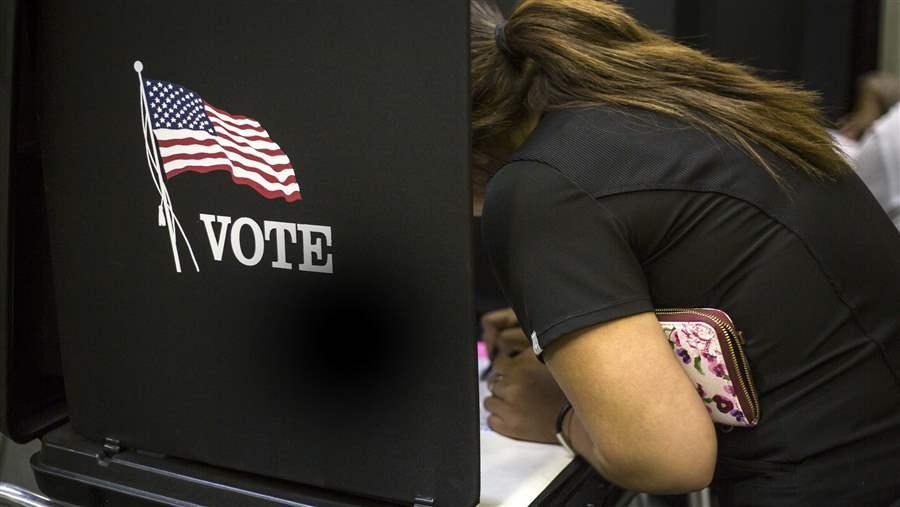New Mexico Blazes Path to Upgraded Motor Voter System
From data to hardware, 3 key components of new registration procedures
Last summer, the New Mexico Motor Vehicles Division (MVD) upgraded its licensing and identification system. State leaders used this large-scale overhaul as an opportunity to also improve the Motor Voter system. In preparation for the upgrade, a small working group made up of a legislator, election officials from the secretary of state’s office, and MVD administrators reviewed design proposals and made recommendations for the new Motor Voter system.
Policy considerations
Early on, the working group identified three key priorities that would guide the design of the new system:
- Citizenship. New Mexico issues identification cards to noncitizens, and state officials recognized that the new system would have to distinguish between citizens and noncitizens so only those eligible would be offered the opportunity to register to vote or update registration information through the Motor Voter process. The state’s system now records the citizenship status of ID card and driver’s license applicants, allowing state officials to distinguish between citizens and noncitizens before prompting users to register to vote.
- Clarity. Working group members determined that the script that MVD clerks used during voter registration transactions could cause confusion for clerks and citizens. For example, the original script asked, “Would you like to register to vote?” without considering whether the person already was registered. Officials rewrote the question so that citizens are still asked if they want to register, but MVD customers who already have a voter registration record are instead able to update their information.
- Efficiency. The state’s previous Motor Voter system required citizens to tell an MVD clerk that they wanted their information used for voter registration. The working group recommended a system in which registration would be the default in order to improve efficiency and register more New Mexicans. Ultimately, the system installed in 2016 did not adopt this recommendation, but state officials expect to revisit the issue as part of a future update.
Technical designs
Guided by the policy considerations, the state took steps to address several technical inefficiencies in its previous Motor Voter system, including:
- Improving data collection. To comply with the federal REAL ID Act of 2005, the state in 2016 began scanning and saving images of customers’ identity and citizenship documents (e.g., birth certificates) and storing them in each citizen’s MVD database record. The new system leverages this work by using these materials to trigger a voter registration transaction for eligible customers.
- Connecting state agencies. The state built an electronic connection between the MVD and secretary of state’s databases. This allows the Motor Voter system to verify in real time whether a citizen is registered and prompts the clerk to ask the appropriate first question from the revised script.
- Upgrading equipment. Each MVD clerk station is outfitted with a digital touch-screen device on which the customer, not the clerk, completes the voter registration transaction. Data fields such as name and address that were supplied during the licensing transaction are prepopulated, and the citizen needs only to review and approve that information, and provide additional details such as political party preference. Because control of the process rests with the potential voter, the system eliminates the possibility that had existed under the state’s previous system that a clerk could bypass the voter registration process.
Challenges in the upgrade process
The effort in New Mexico resulted in significant upgrades to the state’s Motor Voter system, but the process did face some setbacks. For example, when the MVD set up the political party field on the touch-screen devices, the screens were not large enough to accommodate the growing number of parties. To avoid pushing some options to a second page, the state had to reprogram the response options. Instead of listing each party, the first screen offers the choice of major party, minor party, or no party. The next page either lists the individual parties within the selected category or, for “no party,” prompts users to confirm their intention to register as unaffiliated.







